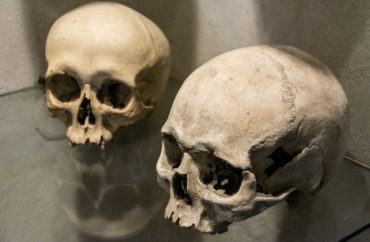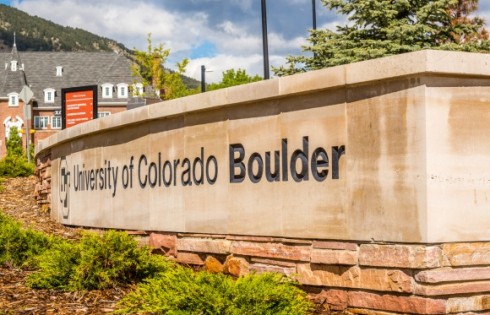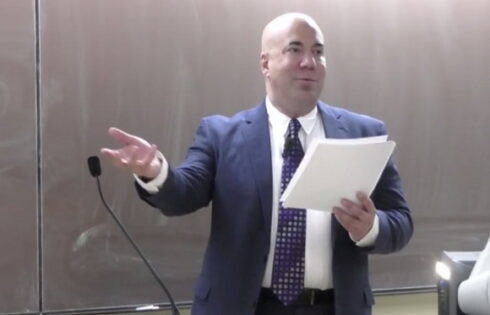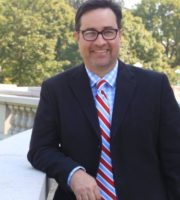
San Jose State anthropologist says valuable collection helps diversity in research
UPDATED
After a year of anti-racism demonstrations on campus, the University of Pennsylvania Museum in April announced it would return a collection of 1,000 human skulls, largely of the remains of African Americans, to their communities of origin.
But one anthropologist said she believes Penn is making a mistake in relinquishing its vast collection of human remains.
“There is tremendous value in retaining these remains,” San Jose State anthropologist Elizabeth Weiss told The College Fix in an email. “Through the use of skeletal remains, anthropologists and archaeologists can reconstruct people’s past lives — diet, disease, activities.”
The skulls, amassed between 1830 and 1840 by doctor Samuel George Morton in an effort to promote white supremacy, were previously part of a classroom display that was discontinued in 2020 following protests over the killing of George Floyd by Minneapolis police.
A statement by Provost Wendell Pritchett and Museum director Christopher Woods said by repatriating the remains, the school sought “atonement and repair for the racist and colonial practices that were integral to the formation of these collections.”
But Weiss said the Penn collection would prove a great resource in the field of forensics, and that it is even more valuable because of its racial diversity.
“One of the problems in anthropology has been that there are too few diverse remains to study that can help forensic anthropologists hone their identification skills,” she said. “Most autopsy collections actually consist of whites, most archaeology collections consist of either whites or — in the US and Canada — Native Americans.”
“Thus, key traits to determine sex, age, and race differences (especially important in forensic settings, such as crime scenes, border crossings, prisoners-of-war, genocide) are based on only a few samples that contain mainly whites, mainly the middle aged to elderly, and mainly males. In order to improve our identification methods, diverse skeletal samples are crucial.”
The collection, however, became the subject of demonstrations on campus in the past year, with groups like Police Free Penn leading the protests.
“We want to make sure there is real community participation in this process every step of the way, not just from folks connected with the institution, and PFP will continue to uplift the demands of Black-led and Indigenous-led organizing around this issue,” a spokesperson for Police Free Penn told the Philadelphia Inquirer in April.
The group is also calling for police to be removed from campus and for reparations to be paid to descendants of a prison experiment in which anti-acne and aging creams were tested on inmates, the proceeds of which were donated to the Penn dermatology department.
A spokesperson for Penn did not immediately respond to a request to comment for this story.
According to a report by anthropology doctoral student Paul Wolff Mitchell, some of the skulls in Penn’s collection were removed from burial grounds used by the Blockley Almshouse and institutions that followed, such as the Philadelphia Hospital and Philadelphia General Hospital.
Campus protesters demand the remains be re-buried on these grounds, with other remains being returned to Cuba, where some of the individuals were enslaved.
But Weiss said she sees difficulty in determining where the remains should be reburied.
“Although genetic research can identify relationships and ancestry; unless there is a direct lineal descendant (such as a great-great-grandaughter), there is no way to go beyond population,” Weiss said. “One misunderstanding of DNA in the Native American context is that it can link ancient remains to specific tribes and it cannot. I suspect that this issue is the same in the case of these remains.”
Weiss also responded to allegations that the skulls had been stolen from gravesites, rather than simply donated by hospitals or individuals themselves.
“I think that the difference is the assumption that the remains were dug up rather than never buried in the first place,” Weiss said.
“Does this make a difference? I would say it doesn’t, especially not 150 years later. Ethics vary by time and place; it is quite common to have burials being dug up. This is still done in places where little space is available.”
Weiss also noted the difficulty in figuring out whether the burial grounds in question were “cemeteries or mass graves or even just covered up due to the cholera outbreaks.”
“What does seem clear (from my readings about the collection) is that these were not Cubans (and although the intent may be to return the remains to Africa after Cuba), why should they go to Cuba initially — where their lives took a turn for the worse through the slave trade,” Weiss asked.
Correction: The original article said the Morton Collection was part of a public display. According to a spokesperson for the museum, the collection was located inside a private classroom within the Museum’s Center for the Analysis of Archaeological Materials.
MORE: Archaeology society blocks video of lecture arguing for more science-based research
IMAGE: Vika Lilu / Shutterstock
Like The College Fix on Facebook / Follow us on Twitter






Please join the conversation about our stories on Facebook, Twitter, Instagram, Reddit, MeWe, Rumble, Gab, Minds and Gettr.